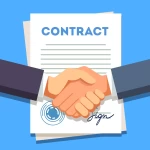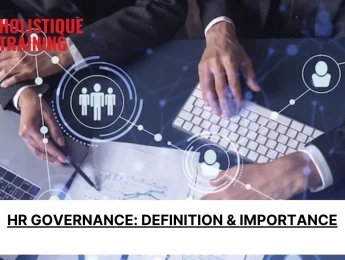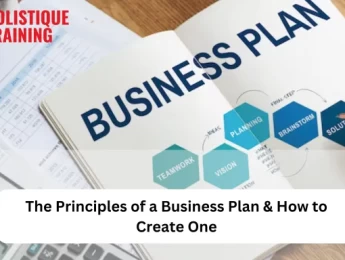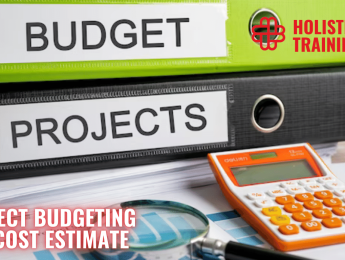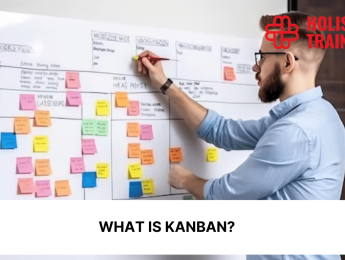- Table of Contents
- What are the Key Components of a Contract Negotiation Strategy?
- How Can You Establish Clear Objectives Before Starting Negotiations?
- What Tactics Can You Use to Maintain a Positive Relationship During Negotiations?
- What Are Effective Communication Strategies for Contract Negotiations?
- How Can You Identify and Address Red Flags in a Contract?
- What Role Does Flexibility Play in Successful Contract Negotiations?
- How Do You Ensure a Smooth Closing and Follow-Up After Contract Negotiations?
Introduction
Navigating contract negotiations successfully requires a well-thought-out strategy encompassing various key components. From setting clear objectives to maintaining positive relationships, effective communication, identifying red flags, leveraging flexibility, and ensuring a smooth closing with follow-up, each stage plays a critical role in achieving favorable outcomes. In this article, we delve into these essential components, providing actionable insights and strategies to enhance your contract negotiation skills and drive mutually beneficial agreements. Whether you're a seasoned negotiator or new to the process, mastering these elements can significantly impact your success in contract negotiations.
What are the Key Components of a Contract Negotiation Strategy?
A contract negotiation strategy typically comprises several key components that collectively contribute to achieving favorable terms and a mutually beneficial agreement. Here are the main components:
- Goal Definition: Clearly define your objectives and desired outcomes for the negotiation process. This includes identifying your priorities, must-haves, and areas where you can be flexible.
- Research and Preparation: Thoroughly research the other party, their needs, goals, and potential negotiation tactics. Gather information about market trends, industry standards, and legal requirements relevant to the contract.
- BATNA Analysis: Determine your Best Alternative to a Negotiated Agreement (BATNA). Understanding your BATNA helps you evaluate proposals and make informed decisions during negotiations.
- Communication Plan: Develop a communication strategy that outlines how you will convey your interests, ask questions, listen actively, and build rapport with the other party.Effective communication is crucial for reaching a consensus.
- Negotiation Style: Choose an appropriate negotiation style based on the situation. This could range from collaborative and win-win approaches to competitive or distributive strategies, depending on the nature of the contract and your relationship with the other party.
- Flexibility and Adaptability: Remain flexible and open to creative solutions. Adapt your strategy as needed during the negotiation process to address changing circumstances or new information.
- Risk Assessment and Mitigation: Identify potential risks associated with the contract and develop strategies to mitigate them. This may involve negotiating specific clauses, setting performance benchmarks, or including dispute resolution mechanisms.
- Legal Review: Involve legal experts early in the process to review draft agreements, assess legal implications, and ensure compliance with relevant laws and regulations.
- Timelines and Deadlines: Establish clear timelines and deadlines for each stage of the negotiation process. Adhering to schedules helps maintain momentum and avoid unnecessary delays.
- Post-Negotiation Follow-Up: Plan for post-negotiation activities, such as finalizing the contract, conducting internal reviews, and establishing protocols for ongoing communication and performance evaluation.
By addressing these key components in your contract negotiation strategy, you can enhance your effectiveness, mitigate risks, and achieve more favorable outcomes in business negotiations.
How Can You Establish Clear Objectives Before Starting Negotiations?
Establishing clear objectives before starting negotiations is crucial for a successful outcome. Here are some steps you can take to ensure your objectives are well-defined:
- Define Your Priorities: Identify what matters most to you in the negotiation. This could include specific terms, pricing, delivery schedules, quality standards, or other factors relevant to the contract.
- Set Realistic Goals: Ensure your objectives are realistic and achievable based on market conditions, industry standards, and the other party's expectations. Unrealistic goals can lead to frustration and impede progress during negotiations.
- Quantify Where Possible: Whenever possible, quantify your objectives. For example, specify desired price ranges, quantity volumes, performance metrics, or timelines. Clear quantification makes it easier to measure success and track progress during negotiations.
- Consider Long-Term Goals: Think beyond immediate gains and consider the long-term implications of the contract. How will it impact your business relationships, market position, profitability, and strategic objectives in the future?
- Prioritize Trade-offs: Recognize that not all objectives may be achievable simultaneously. Prioritize your objectives and be prepared to make trade-offs or concessions if needed to reach a mutually acceptable agreement.
- Align with Stakeholders: Consult with relevant stakeholders within your organization, such as legal, finance, operations, and marketing teams. Ensure alignment on objectives, strategies, and acceptable negotiation boundaries.
- Anticipate Counterpart Objectives: Consider the other party's likely objectives and interests. Anticipating their priorities can help you craft proposals and concessions that are more likely to resonate with them.
- Set Clear Parameters: Establish clear parameters for what constitutes a successful outcome. Define thresholds or red lines beyond which you are unwilling to compromise without significant justification.
- Be Flexible Yet Firm: While it's important to be flexible and open to alternatives, remain firm on core objectives that are non-negotiable. Communicate these clearly to the other party to manage expectations from the outset.
- Document Objectives: Document your objectives in writing, preferably in a formal negotiation plan or strategy document. This serves as a reference point throughout the negotiation process and helps maintain focus and consistency.
Table 1:Strategic Objective Setting for Successful Negotiations
Step | Description |
Define Your Priorities | Identify key aspects such as specific terms, pricing, delivery schedules, quality standards, or other relevant factors. |
Set Realistic Goals | Ensure objectives are feasible based on market conditions, industry standards, and counterpart expectations. |
Quantify Where Possible | Specify measurable goals such as desired price ranges, quantity volumes, performance metrics, or timelines. |
Consider Long-Term Implications | Evaluate how the contract aligns with long-term business relationships, market position, profitability, and strategic objectives. |
Prioritize Trade-offs | Recognize that not all objectives may be achievable simultaneously; prioritize objectives and be prepared to make concessions if necessary. |
Align with Stakeholders | Consult with relevant stakeholders to ensure alignment on objectives, strategies, and negotiation boundaries. |
Anticipate Counterpart Objectives | Consider the other party's likely objectives and interests to craft proposals and concessions that resonate with them. |
Set Clear Parameters | Define clear parameters for a successful outcome, including thresholds or red lines for non-negotiable objectives. |
Be Flexible Yet Firm | Balance flexibility with firmness on core objectives, communicating clearly to manage expectations from the start. |
Document Objectives | Document objectives in a formal negotiation plan or strategy document to serve as a reference and maintain focus. |
By following these steps, you can establish clear and achievable objectives that set the foundation for effective contract negotiations.
What Tactics Can You Use to Maintain a Positive Relationship During Negotiations?
Maintaining a positive relationship during negotiations is essential for fostering collaboration, trust, and mutual respect. Here are some tactics you can use to achieve this:
- Establish Rapport: Begin by building rapport with the other party. Engage in small talk, show genuine interest in their perspective, and find common ground to create a friendly and welcoming atmosphere.
- Active Listening: Practice active listening by paying close attention to what the other party is saying. Show empathy, ask clarifying questions, and demonstrate that you value their input and concerns.
- Focus on Interests, Not Positions: Instead of fixating on rigid positions, focus on understanding each other's underlying interests, goals, and motivations. This approach encourages collaborative problem-solving and can lead to mutually beneficial outcomes.
- Communicate Clearly and Respectfully: Use clear and respectful communication throughout the negotiation process. Avoid language that may be perceived as confrontational or dismissive, and strive to maintain a constructive tone.
- Acknowledge Achievements: Acknowledge achievements and progress made during negotiations. Celebrating small wins can create a positive momentum and reinforce a sense of accomplishment for both parties.
- Seek Win-Win Solutions: Aim for win-win solutions that address the interests of both parties. Look for creative alternatives and be open to compromise to achieve a mutually beneficial outcome.
- Manage Emotions: Keep emotions in check and avoid reacting impulsively to challenging or contentious issues. Stay calm, composed, and focused on finding constructive solutions.
- Address Issues Collaboratively: When issues or disagreements arise, address them collaboratively rather than adopting an adversarial approach. Brainstorm solutions together, consider multiple perspectives, and work towards consensus.
- Show Appreciation: Express appreciation and gratitude for the other party's contributions, efforts, and willingness to collaborate. Recognizing their contributions helps strengthen the relationship and fosters a positive atmosphere.
- Follow Through on Commitments: Honor your commitments and follow through on agreements reached during negotiations. Demonstrating reliability and integrity builds trust and reinforces a positive relationship for future interactions.
By implementing these tactics, you can cultivate a positive relationship during negotiations that lays the groundwork for ongoing collaboration, trust, and successful outcomes.
What Are Effective Communication Strategies for Contract Negotiations?
Effective communication is crucial for successful contract negotiations. Here are some strategies to enhance communication during negotiations:
- Clarity and Precision: Use clear and precise language to convey your messages and intentions. Avoid ambiguity or vague statements that could lead to misunderstandings.
- Active Listening: Practice active listening by paying full attention to what the other party is saying. Show empathy, ask clarifying questions, and summarize key points to demonstrate understanding.
- Open and Honest Communication: Foster an environment of open and honest communication. Be transparent about your interests, priorities, and constraints, and encourage the other party to do the same.
- Use of Nonverbal Communication: Pay attention to nonverbal cues such as body language, facial expressions, and tone of voice. Be mindful of your own nonverbal communication to ensure it aligns with your verbal messages.
- Empathy and Understanding: Show empathy and understanding towards the perspectives and concerns of the other party. Acknowledge their emotions and viewpoints, even if you disagree, to build rapport and trust.
- Focus on Solutions: Keep the focus on finding solutions rather than dwelling on problems or past disagreements. Collaborate with the other party to brainstorm creative alternatives and reach mutually acceptable outcomes.
- Stay Calm and Professional: Maintain a calm and professional demeanor, even in challenging or contentious situations. Avoid reacting impulsively or becoming defensive, as this can hinder productive communication.
- Clarify Assumptions: Clarify any assumptions or interpretations to ensure shared understanding. Don't assume that the other party has the same understanding of terms or concepts unless explicitly discussed.
- Document Agreements: Document key agreements and decisions in writing during negotiations. This helps prevent misunderstandings later on and provides a reference point for both parties.
- Seek Feedback: Encourage feedback from the other party about their perceptions of the communication process. Use feedback to make adjustments and improve communication effectiveness.
By employing these communication strategies, you can enhance clarity, understanding, and collaboration during contract negotiations, leading to more successful and mutually beneficial outcomes.
How Can You Identify and Address Red Flags in a Contract?
Identifying and addressing red flags in a contract is crucial to avoid potential risks and ensure a mutually beneficial agreement. Here's how you can identify and address red flags effectively:
- Thorough Review: Conduct a thorough review of the entire contract document, including all clauses, terms, and conditions. Look for inconsistencies, vague language, and potential areas of concern.
- Legal Expertise: Involve legal experts or consultants early in the process to review the contract. Legal professionals can identify legal risks, assess compliance with regulations, and provide guidance on potential red flags.
- Financial Implications: Evaluate the financial implications of the contract, including pricing structures, payment terms, penalties, and incentives. Ensure that the financial terms are fair, reasonable, and aligned with industry standards.
- Risk Assessment: Conduct a risk assessment to identify potential risks associated with the contract. This may include risks related to performance, delivery, quality, liability, intellectual property, and dispute resolution.
- Contractual Obligations: Review the contractual obligations of both parties to ensure clarity and feasibility. Identify any unrealistic or overly burdensome obligations that may raise red flags.
- Indemnification and Liability: Pay attention to indemnification clauses, limitations of liability, and insurance requirements. Ensure that these provisions adequately protect your interests and mitigate potential risks.
- Termination and Renewal: Examine termination and renewal clauses to understand the conditions under which the contract can be terminated or renewed. Look for any unfavorable terms or restrictions that may be red flags.
- Performance Metrics: Define clear performance metrics and benchmarks to measure the performance of both parties. Ensure that the contract includes provisions for monitoring performance and addressing non-compliance.
- Dispute Resolution: Evaluate the dispute resolution mechanism outlined in the contract. Consider whether it provides a fair and efficient process for resolving disputes, including mediation, arbitration, or litigation procedures.
- Negotiation and Amendment: If you identify red flags during the review process, negotiate amendments or revisions to address concerns. Be proactive in addressing red flags rather than ignoring or downplaying potential risks.
By systematically identifying and addressing red flags in a contract, you can mitigate risks, protect your interests, and ensure a more robust and reliable agreement for both parties.
What Role Does Flexibility Play in Successful Contract Negotiations?
Flexibility plays a crucial role in successful contract negotiations by enabling parties to adapt, collaborate, and achieve mutually beneficial outcomes. Here are several ways in which flexibility contributes to successful negotiations:
- Finding Common Ground: Flexibility allows parties to explore common ground and identify areas of agreement. By being open to alternative solutions and compromises, negotiators can bridge differences and reach mutually acceptable terms.
- Navigating Complexities: Contracts often involve complex issues, varying stakeholder interests, and evolving market conditions. Flexibility enables negotiators to navigate these complexities by adjusting strategies, exploring creative solutions, and responding to changing circumstances.
- Building Trust and Rapport: Demonstrating flexibility during negotiations builds trust and rapport with the other party. It shows a willingness to listen, consider alternative perspectives, and collaborate in finding solutions, fostering a positive relationship.
- Managing Conflicts: Flexibility helps in managing conflicts and resolving disagreements more effectively. Instead of becoming entrenched in rigid positions, negotiators can use flexibility to de-escalate tensions, find common interests, and work towards win-win outcomes.
- Adapting to Market Dynamics: Market dynamics can change during the negotiation process, such as shifts in pricing, supply-demand conditions, or regulatory changes. Flexibility allows negotiators to adapt their strategies, terms, and conditions to reflect current market realities.
- Addressing Unexpected Events: Unexpected events or developments may occur that impact the contract's implementation or performance. Flexibility enables parties to address these events through contract amendments, renegotiations, or alternative arrangements, reducing potential disruptions.
- Encouraging Innovation: Flexibility encourages innovation and creativity in finding solutions to complex challenges. It allows negotiators to explore new ideas, technologies, and approaches that may lead to improved outcomes and added value for both parties.
- Enhancing Long-Term Relationships: Flexibility fosters long-term relationships by showing a commitment to cooperation, fairness, and adaptability. It sets a positive tone for future interactions and collaborations beyond the current contract.
- Managing Risks: Flexibility can help manage risks by allowing parties to incorporate contingency plans, risk-sharing mechanisms, and performance-based adjustments into the contract. This proactive approach enhances contract resilience and reduces vulnerability to unforeseen risks.
- Achieving Sustainable Agreements: Ultimately, flexibility contributes to the sustainability of agreements by aligning them with evolving business needs, market dynamics, and external factors. It enables contracts to remain relevant, effective, and mutually beneficial over time.
In summary, flexibility empowers negotiators to navigate complexities, build trust, manage conflicts, adapt to changes, and achieve sustainable agreements that meet the needs of all parties involved in contract negotiations.
How Do You Ensure a Smooth Closing and Follow-Up After Contract Negotiations?
Ensuring a smooth closing and effective follow-up after contract negotiations is essential to solidify the agreement and maintain a positive relationship. Here's a guide to help you achieve that:
- Finalize and Document Agreement: Once negotiations are complete, finalize the agreement and document all terms, conditions, and obligations agreed upon by both parties. Ensure that the contract is clear, comprehensive, and legally binding.
- Review and Approval: Conduct a final review of the contract with relevant stakeholders, such as legal, finance, and operations teams, to ensure accuracy, compliance, and alignment with organizational policies.
- Signatures and Execution: Obtain signatures from authorized representatives of both parties to formally execute the contract. Follow established procedures for signing and exchanging contract documents, including electronic signatures if applicable.
- Communicate Contract Closure: Notify all stakeholders, including internal teams and external partners, about the successful closure of the contract. Provide relevant details, such as effective dates, key contacts, and implementation timelines.
- Implementation Planning: Develop a detailed implementation plan that outlines tasks, responsibilities, milestones, and timelines for fulfilling contractual obligations. Coordinate with relevant departments to ensure a seamless transition and execution of the contract.
- Post-Negotiation Follow-Up: Schedule a follow-up meeting or communication with the other party to reaffirm commitments, clarify any remaining questions, and address post-negotiation issues or adjustments if needed.
- Performance Monitoring: Monitor performance metrics and milestones outlined in the contract to track progress and ensure compliance with agreed-upon terms. Use regular reports, meetings, or checkpoints to review performance and address any deviations or concerns promptly.
- Addressing Issues: Proactively address any issues or challenges that arise during contract implementation. Maintain open communication channels with the other party to discuss concerns, seek solutions, and make necessary adjustments as per contract provisions.
- Feedback and Evaluation: Seek feedback from internal and external stakeholders about their experience with the contract, including strengths, weaknesses, and areas for improvement. Use feedback to enhance future contract negotiations and relationship management.
- Renewal or Extension Planning: If applicable, initiate discussions about contract renewal or extension well in advance of the contract expiration date. Evaluate performance, assess evolving needs, and negotiate terms for the renewal or extension period.
- Documentation and Record-Keeping: Maintain accurate and updated records of all contract-related documents, communications, amendments, and performance evaluations. Ensure proper storage and accessibility for future reference or audits.
Table 2:Contract Negotiation Closure and Follow-Up Guide
Step | Description |
Finalize and Document Agreement | Complete negotiations, finalize all terms, and ensure the contract is clear, comprehensive, and legally binding. |
Review and Approval | Conduct a final review with relevant stakeholders to ensure accuracy, compliance, and alignment with organizational policies. |
Signatures and Execution | Obtain signatures from authorized representatives to formally execute the contract, following established signing procedures. |
Communicate Contract Closure | Notify all stakeholders about the successful closure, providing relevant details such as effective dates and key contacts. |
Implementation Planning | Develop a detailed plan outlining tasks, responsibilities, milestones, and timelines for fulfilling contractual obligations. |
Post-Negotiation Follow-Up | Schedule follow-up meetings to reaffirm commitments, clarify questions, and address any post-negotiation issues or adjustments. |
Performance Monitoring | Monitor performance metrics outlined in the contract to track progress and ensure compliance with agreed-upon terms. |
Addressing Issues | Proactively address any issues during implementation, maintaining open communication channels for solutions and adjustments. |
Feedback and Evaluation | Seek feedback from stakeholders to identify strengths, weaknesses, and areas for improvement in future contract negotiations. |
Renewal or Extension Planning | Initiate discussions for contract renewal or extension, evaluating performance and negotiating terms well in advance. |
Documentation and Record-Keeping | Maintain accurate records of all contract-related documents, communications, amendments, and performance evaluations.
|
By following these steps, you can ensure a smooth closing of contract negotiations and establish an effective framework for post-negotiation follow-up, implementation, performance monitoring, and relationship management.
Conclusion
Mastering the key components of contract negotiation, from setting clear objectives to maintaining positive relationships, effective communication, addressing red flags, leveraging flexibility, and ensuring a smooth closing, is crucial for successful outcomes and lasting partnerships. By integrating these strategies, negotiators can navigate challenges, build trust, and create value for mutual benefit, driving positive results in business negotiations.






